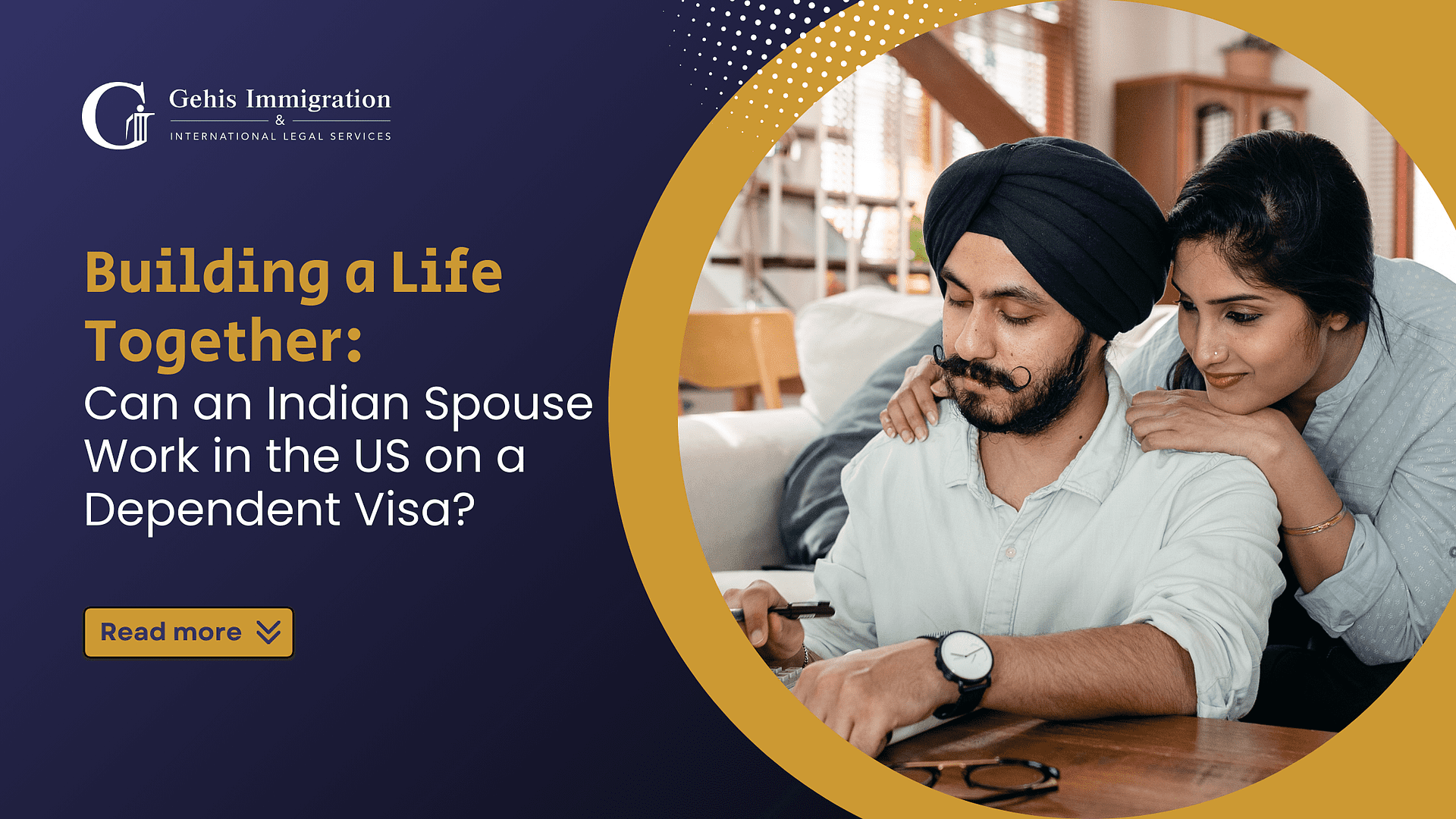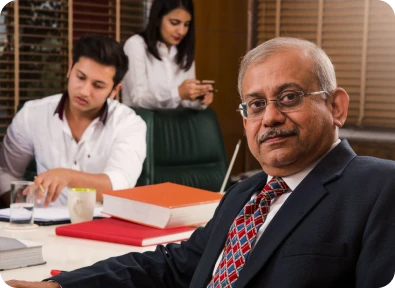Indian Spouse Work in the US on a Dependent Visa. For Indian spouses who move to the US to join their partners, understanding their rights and opportunities, especially regarding employment, is important.
Visa regulations can significantly impact a dependent spouse’s ability to work, contribute financially, and pursue career goals in the US. Knowing the specific rules and options available helps dependent spouses make informed decisions and plan their lives effectively.
This blog helps Indians understand their Indian Spouse Work in US on Dependent Visa. We’ll look at different dependent visas, what jobs they can do, and other ways to work in the US.
What are US Dependent Visas?
Dependent visas let spouses and kids come to the US with the main visa holder, but have different rules about working. The H-4 visa is for dependents of H-1B visa holders. At first, H-4 visa holders couldn’t work. But now, if they meet certain requirements, they can apply for work authorization.
Another dependent visa is the L-2 visa, granted to dependents of L-1 visa holders who are intracompany transferees working in managerial positions or possessing specialized knowledge. L-2 visa holders are allowed to work in the US after obtaining an EAD.
Other dependent visas are F-2 and J-2. F-2 visa holders (dependents of F-1 students) can’t work. But J-2 visa holders (dependents of J-1 exchange visitors) can work, as long as the J-1 visa holder is valid. To get these visas, you need to be the spouse or child under 21 of the primary visa holder.
Indian Spouse Work in US on H-4 Dependent Visa:
The H-4 visa is designed for dependents (spouses and children under 21) of H-1B visa holders, allowing them to reside in the United States. However, H-4 visa holders face significant employment restrictions. Initially, they were not permitted to work, which often led to challenges for families relying on a single income.
The H-4 EAD lets some H-4 visa holders work. To qualify, the H-1B visa holder must have an approved green card petition or have special H-1B status under a law called AC21.
To get the H-4 EAD, you need to apply and provide proof of your relationship to the H-1B visa holder and their status. Once approved, you can work any job, which helps your family financially and professionally.
L-2 Dependent Visa: A Way to Employment
The L-2 visa is for spouses and kids of L-1 visa holders who work in management or have special skills. It lets them live in the US and work more easily than other dependent visas.
L-2 visa holders can work in the US after getting an EAD. The EAD lets them work any job, for any employer, for any number of hours. This gives L-2 spouses a lot of freedom to have careers and help support their families financially.
L-2 visa holders need to apply to USCIS for work authorization. They must provide proof of their L-2 visa, their marriage to the L-1 visa holder, and a copy of the L-1 visa holder’s arrival/departure record.
Getting the H-4 EAD can take a few months. But once approved, L-2 visa holders can start working right away. This gives them more freedom to find jobs and grow their careers in the US.
Dependent Visas Categories With Limited Opportunities
Dependent visas like F-2 and J-2 let spouses and kids come to the US with the main visa holder. But they have strict rules, especially about working.
F-2 visa holders, who are dependents of F-1 students, cannot work at all. They can live and study in the US, but they are not allowed to have jobs. This can be difficult for F-2 spouses who want to work or contribute financially.
J-2 visa holders can work more easily. They can apply for work authorization and get any job they want. But the J-1 visa holder must keep their status to let the J-2 work.
J-2 visa holders can work in some cases. They must show their job is not needed to support the J-1 visa holder, but is for fun, culture, or personal growth. They need to provide proof of marriage, copies of J-1 and J-2 visas, and the J-1 visa holder’s exchange visitor certificate.
Transitioning From a Dependent Visa to a Work Visa
Dependent spouses can switch to work visas, giving them more freedom and chances to have careers in the US. They can get an H-1B visa, other work visas, employer sponsorship, or study in the US and use OPT as F-2 dependents.
The H-1B visa is a common way for people on dependent visas to get a work visa. It’s for foreign workers with specialized skills and a college degree or higher. To get an H-1B, a US employer must sponsor the applicant by filing a petition. There is a limit on H-1B visas each year, so the application process can be competitive.
Employment Based visas
EB visas are another option for dependent visa holders to work in the US. EB visas have different categories based on skills, education, and job offers. EB-1 is for people with special talents, professors, researchers, and managers. EB-2 is for people with advanced degrees or special skills. EB-3 is for skilled workers, professionals, and other workers. Each EB visa has its own rules, but they all need an employer to sponsor the applicant.
Indian Spouse Work in US on Dependent Visa. Employers must sponsor many work visas. They must show the job is real and needs the applicant’s skills, and no Americans can do the job. Employer sponsorship can get temporary work visas like H-1B or permanent green cards.
F-2 dependents can study in the US, change to an F-1 student visa, and get work authorization through Optional Practical Training (OPT). OPT lets F-1 students work in their field for up to 12 months (or 36 months for STEM graduates) after finishing their degree. This work experience can help them get a job and move to an H-1B or other work visa.
Final Word
H-4 visa holders can get work authorization through an H-4 EAD. L-2 visa holders have an easier path to work authorization than other dependent visas. F-2 and J-2 visa holders have limited work options, with some exceptions. Dependent visa holders can transition to work visas by getting an H-1B, exploring EB visas, getting employer sponsorship, or using OPT for F-2 dependents.
Exploring these options can open doors to professional growth and financial stability for Indian Spouse Work in US on dependent visa, By learning about visa rules, spouses can make good choices and take action to get the jobs they want in the US, which helps them live happy lives together.








